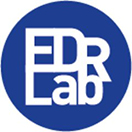Public response to the public consultation prior to the entry into force of the obligation to make digital books accessible Issued by ARCOM
Gautier Chomel, project manager (gautier.chomel@edrlab.org)
Hadrien Gardeur, board member (hadrien.gardeur@gmail.com)
July 2024
Summary
The European Accessibility Act will enter into force on June 28, 2025. In France, ARCOM, the independent Authority responsible for ensuring that digital books comply with accessibility requirements, has launched a public consultation to gather comments from interested parties on five lines of thought proposed in the form of questions.
We proposed a four-part cross-cutting response in the form of actions we feel are necessary to ensure the best possible impact from the entry into force of the obligation to make digital books accessible. This document is an internationalised version of this response.
Upstream, these actions consist of ensuring that the state of the art is adequately taken into account, together with an invitation to consider the digital book chain as a whole, from creator to reader. Once these prerequisites have been established, two recommendations follow: to measure and to reward progressive and partial efforts when they enable the state of the art to be reached at a reasonable cost.
This approach will facilitate future developments by reducing the marching orders when the possibilities offered by standards or reading tools evolve. While the landscape of accessible publishing in France seems ready to meet accessibility requirements, the lack of data on the state of collections and of tools to obtain, visualize and understand this data is problematic, as it is not possible to measure shortcomings or to value the efforts made. We know that textual content has been compliant for several years, thanks to the mobilization of the interprofession, but it is also certain that a gradual approach is needed to produce and consume complex visual content and layouts in an accessible way. The regulators should encourage innovation.
1. Acknowledging the state of the art
Access to reading is part of a digital ecosystem in which publishing houses are asked to comply with standards that enable downstream players to structure their practices and ensure the smooth operation of all distribution and reading tools. A good understanding of the current state of play and the issues linked to these standards and their use is therefore an essential prerequisite for any assessment of the efforts made or those still to be made.
State of the art of standards
For text content, the EPUB (Electronic Publication) standard is the most widely used digital book format and is supported by many reading devices. EPUB version 3.0, released in 2011, introduced enhanced accessibility features, such as support for text-to-speech, alternative texts for images, and content structuring tags to facilitate navigation. EPUB 3.x is compatible with accessibility standards such as WCAG (Web Content Accessibility Guidelines) and ARIA (Accessible Rich Internet Applications).
Content with a fixed layout (FXL) can be made accessible to screen reader users but remains unsuitable for appearance adjustment needs. The tools used to produce and manipulate these formats are also ill-suited to producing computer-quality files, the priority being set on the quality of visual rendering. Although the W3C has recently published a best practice document concerning the accessibility of FXL files, solutions remain partial and may depend in part on implementing new functionalities in reading applications, such as text extraction to enable adaptation.
As far as audiobooks are concerned, despite attempts, it is clear that standards are not being used. Market players rely mainly on simple audio tracks, supplemented by an Excel or CSV file to document partial metadata. Although audiobooks are often considered synonymous with accessibility, it is in practice a format that is only partially accessible because they address only one sense (hearing) and offer few possibilities for location and navigation. Several organisations are working on this issue, but there is no international coordination or organisation to produce and advocate for a standard. As a result, the accessibility of this content can only be measured in a compartmentalised environment, as the book is inseparable from its reading application.
The metadata repositories used to describe books and transmit information are evolving. There are two main groups, with ONIX being used for online distribution and sales, while libraries continue relying on MARC variants. Following work carried out, in particular by EDRLab, on the issue of reporting accessibility features, ONIX has been updated three times since September 2023. This repository now provides a complete description of reading modes and accessibility features, but its use by publishers and those involved in distribution still needs to be improved. Suggestions have also emerged from the same work concerning MARC fields. However, libraries and their information and management systems (ILS) generally progress according to a more extended timetable. It is therefore unlikely that complete solutions will be implemented by June 2025, but rather that partial implementations will be followed by gradual improvements.
State of the art in reading solutions
Reading solutions follow the development of standards. Few applications stand out by offering satisfactory reading functions. There are a number of key areas for improvement:
- Very few applications can be used with screen readers, either for reading or for their interfaces.
- Apart from Thorium and Cantook, there is almost no support for displaying accessibility metadata.
- The customisation options are still too limited. They often lack fine controls on spacing (letters and words in particular) and text presentation (font weight, normalisation), and most of them are content to embed OpenDyslexic rather than offering users several choices of specialist fonts.
- Few applications offer text-to-speech functionality without needing a screen reader, even though this is a crucial feature for dyslexic users. For those applications that do, more needs to be done regarding personalisation options (choice of voice, highlighting and text tracking) and text contextualisation (for example, announcing the presence of a footnote).
Work on advanced reading functions for FXL EPUBs and PDFs is still in infancy. In particular, there is talk of a reading mode that would make it possible to extract text from content, such as alternative texts. Presenting this text in a view that allows the user to adjust the layout and presentation of the text could provide a particularly useful experience for users with learning disabilities or reading difficulties.
EDRLab is collaborating with the Transition to EPUB group led by the Daisy consortium, which is working in particular on the evaluation of technical solutions for complex content such as, for example, extended descriptions for images and complex graphics, which provide a detailed description of an image or graphic, enabling screen reader users to understand complex visual content.
2. Considering accessibility of digital books in their entirety, from creation to reading
The issues surrounding the accessibility of books for people with disabilities call for a comprehensive review of the practices and tools available to publishing houses and the reading solutions offered to the target audience.
Various tools are available, but their design and implementation require high technical expertise.
Although accessible content creation tools exist, such as the EPUB standard, the Daisy KB knowledge base, and verification tools such as Epubcheck, ACE and SMART, their use requires in-depth expertise. This can lead to difficulties for professionals and encourage dependence on a few players.
Consumer tools that are easier to use need to be developed. Open-source development kits should be made available to ensure that tool producers focus on usability and that the underlying complex mechanisms are solid, as they are built on foundations and architectures that are mastered and harmonised by the interprofessional.
In addition, advances in artificial intelligence, particularly in the area of content generation, should be supervised to guarantee respect for copyright and the quality of the content generated.
A changing transmission chain
The work carried out by EDRLab as part of the Signposting project has led to the implementation of proofs of concept for the display of accessibility information. As a result, French independent bookshops are well on the way to meeting their needs, although challenges remain. International platforms are benefiting from this in-depth industry work.
Regarding libraries, the landscape of portals for making content available has been measured since 2014 thanks to the Barometer of digital accessibility in public reading supported by the French Ministry of Culture Directorate-General for Media and Cultural Industries (DGMIC, Service du livre et de la lecture).
Need for convergence between specialist and general public reading tools and practices
Regarding readers, there has been a lack of information on the possibilities offered by natively accessible publishing. To ensure that the impact of adding accessibility to digital books is effective, we need to consider readers as part of the ecosystem and ensure that they are able to take advantage of this new offer.
People with disabilities can use specialised devices to access books. These devices, which are often expensive, currently provide only limited support for reading mainstream formats such as EPUB3. There is also a lack of support for protection methods. Consumer reading devices, such as e-readers, may offer an interesting alternative, provided they are compatible with the needs of people with disabilities. It is therefore essential to encourage convergence between specialist and consumer reading devices to offer accessible and practical solutions.
Another aspect to consider is readers’ information and skills in using digital tools. It is essential to provide clear and comprehensive information on accessible reading tools and practices and offer training tailored to the needs of different audiences.
3. Measuring the condition of collections and anticipating risks to provide the means to manage and measure impact
Due to the lack of data on the subject, it is impossible to assess the impact of accessibility requirements on the offer that will be made available to people with disabilities. The current state of the collections is unknown, and without a reference point, it will not be possible to assess the real impact of the efforts made.
The study carried out as part of the Accessible Backlist Ebook Laboratory (ABELab) has shown that most French collections are available in EPUB3 format, making their intrinsic quality suitable for reading under different sensory conditions. Today’s main challenge is augmenting this content with text alternatives for meaningful graphic resources, primarily an editorial task.
However, data presented by the distributor De Marque in December 2023 shows that only 0.028% of the catalogue declares itself to be compliant with a standard ensuring compliance with the directive’s requirements, mainly due to a lack of metadata communicated in ONIX or limited use of compliance metadata in EPUB.
Monitoring centre and barometer
An analysis of what already exists is necessary. This can be done on two levels, firstly on a declarative basis by looking at the accessibility metadata provided by publishers in the ONIX records, then enriched by an analysis of the files to complete the information that is often missing. An analysis of this kind should show that large parts of the collection are already accessible to many people. It would act as an information tool for all players in the chain, from publishers to readers, highlighting the progress made in the coming years.
To ensure equivalent information in the various countries, EDRLab plans to support such an initiative by proposing tools and a methodology that can be applied at the national level and then federating the results.
Anticipating risks
It is necessary to consider that negative impacts are possible. Firstly, there is a risk that the diversity of books on offer will disappear. Publishers could concentrate on the most popular and profitable titles, leaving aside lesser-read titles that are just as important for people with disabilities and the general public.
Secondly, the lack of tools that can be used without advanced technical skills is an obstacle to bringing books into compliance. Some publishing houses could find themselves dependent on service providers with a high level of technical expertise to bring their books into compliance, which could lead to additional costs and a concentration of digital production players and, consequently, a loss of diversity in the varied ecosystem of the publishing sector in France.
4. Promoting progressive accessibility efforts
Simple, low-cost solutions must be implemented to encourage publishers to make their works as accessible as possible. Implementing simple actions at the collection level should be considered and encouraged, including, for example, adding information on accessibility features to all ebooks.
This type of action, aimed at identifying gaps, should be valued as such to encourage as many publishers as possible to make as many works as accessible as possible, even if this accessibility remains partial and will have to be improved in the future as part of a gradual approach.
Information as a prerequisite
Firstly, regulatory authorities should positively account for the presence of accessibility information, the first indicator of the publisher’s responsibility. This proves that the publisher has taken the initiative to find out about the current state of accessibility and ensures that readers will only buy a partially accessible book with full knowledge of the facts.
Consider the importance of visually represented information
According to data presented by the distributor De Marque in December 2023, only 5.6% of books are labelled as fully readable in synthetic voice or Braille. However, a further 7.1% of books have no image outside the cover and should also be indicated as fully readable with senses other than vision.
For the rest of the catalogues, the first iteration consists of indicating visuals that do not carry information. Simple rules make it possible to quickly identify series of decorative images.
This will allow us to count the complex illustrations or diagrams requiring the creation of additional textual content. These elements will have the greatest impact on the workload involved in making content accessible.
Encouraging complementarity of formats
It is important to consider the complementarity of formats for works available in multiple formats. People with disabilities have different reading needs, so it is important to offer formats adapted to these needs. The only format currently able to meet the greatest number of needs is the EPUB3 format, which can be reorganised. However, for certain collections, publishers may need to offer complementary formats such as fixed page layouts or audiobooks.
The accessibility of a title should be considered in light of the different formats on offer and how they complement each other to provide a diversified accessibility offering. The availability of titles in specialised formats, adapted under the copyright exception, should also be considered to determine whether or not they are available in a format accessible to people with print disabilities.
This implies that publishers and intermediary players agree on shared methods for linking together the expressions of work.
Delaying complex content
In the case of complex content, making it accessible to people who use a screen reader can fundamentally alter the work. The state of the art in technical standards and the availability of production tools do not allow the creation of works with advanced functionalities, so it is necessary to promote experimentation without penalising what already exists, at the risk of seeing whole sections of digital collections disappear.




 contact@edrlab.org
contact@edrlab.org +33 1 83 64 41 34
+33 1 83 64 41 34
